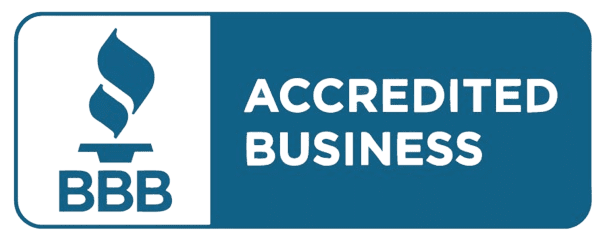FENCE TERMINOLOGY
At Osceola Fence, we have over 49 years of experience installing fences in Chicago and Suburbs. And we strive to make sure to provide our clients with the resources necessary to fully understand their fencing options. Below is a list of fence terms and what they mean.
- Security Mesh: Heavy-duty wire mesh fencing designed to enhance security and prevent unauthorized access.
- Anti-Climb Spikes: Metal spikes or deterrents installed on top of fences to discourage climbing.
- Barbed Tape: Razor wire or sharp-edged tape used in high-security fencing installations.
- Access Control: Systems or mechanisms for regulating entry and exit through commercial fence gates, such as keypads, card readers, or biometric scanners.
- Perimeter Security: Measures taken to secure the boundary of a commercial property, often involving fencing, gates, and surveillance systems.
- Crash Barrier: Protective barriers or fencing installed to prevent vehicle intrusion or collisions.
- High-Security Fence: Fencing designed to meet stringent security requirements, often featuring anti-climb features, high-strength materials, and specialized construction.
- Industrial Fence: Heavy-duty fencing designed for use in industrial settings, such as warehouses, manufacturing facilities, and distribution centers.
- Chain Link Security Fence: Chain link fencing with smaller mesh sizes and heavier gauge wire for enhanced security.
- Bollard: Short, sturdy posts installed along commercial fencing lines to prevent vehicle access or protect infrastructure.
- Cantilever Gate: A sliding gate that operates by extending horizontally along a track, commonly used in commercial and industrial applications.
- Barrier Gate: A swinging or sliding gate used to control vehicle access to commercial properties, parking lots, or restricted areas.
- Crash-rated Fence: A fence certified to withstand impact from vehicles traveling at high speeds, often used in perimeter security applications for critical infrastructure or government facilities.
- Turnstile: A revolving gate or barrier with multiple arms, used to regulate pedestrian access to commercial properties, stadiums, or public transit stations.
- Perimeter Intrusion Detection System (PIDS): Electronic sensors or surveillance technology used to detect and deter unauthorized entry or intrusion along commercial fencing lines.
- CCTV Integration: Integration of closed-circuit television (CCTV) cameras with commercial fencing systems for enhanced security monitoring and surveillance.
- Fence Line Alarm: Sensors or detectors installed along the perimeter of commercial fences to trigger alarms in the event of unauthorized access or tampering.
- Privacy Screening: Fencing materials or panels used to block visibility and provide privacy for commercial properties or outdoor areas.
- Dumpster Enclosure: Fencing or enclosures designed to conceal dumpsters and waste receptacles on commercial properties, often required for compliance with local regulations.
- Guardrail: Protective railing or barrier installed along roadsides, bridges, or elevated platforms to prevent vehicle accidents and protect pedestrians.
- Acorn Finial: Ornamental caps placed on top of fence posts for decorative purposes.
- Post Cap: Protective covers placed on top of fence posts to prevent water damage and enhance aesthetics.
- Scalloped Fence: A fence with a decorative top edge that features alternating concave and convex sections.
- Dog-Ear Picket: A type of picket with a cut-off, angled top resembling a dog’s ear.
- Board-on-Board: A style of fence construction where pickets are installed in an overlapping fashion to provide complete privacy.
- Shadowbox Fence: A fence design featuring alternating pickets on each side of the rails to create a visually appealing pattern.
- Stockade Fence: A tall, solid fence constructed with closely spaced pickets or panels to provide maximum privacy and security.
- Lattice Fence: A fence incorporating lattice panels for added visibility and decorative appeal.
- Vinyl-Coated Chain Link: Chain link fencing with a vinyl coating applied to the steel wire for enhanced durability and aesthetics.
- Privacy Slats: Inserts placed into chain link fencing to increase privacy by reducing visibility through the mesh.
- Fence Fabric: The woven mesh portion of a chain link fence.
- Fence Line: The perimeter or boundary along which a fence is installed.
- Fence Post Driver: A tool used to manually or mechanically drive fence posts into the ground.
- Fence Stretcher: A tool used to pull wire fencing tight during installation.
- Fence Tensioner: A device used to adjust the tension of wire fencing to prevent sagging and ensure stability.
- Hog Ring Pliers: Tools used to secure chain link fence fabric to tension wire or line posts.
- Gate Hinge: Hardware used to attach gates to fence posts and enable swinging movement.
- Gate Latch: A device used to secure gates in a closed position.
- Gate Stop: A device installed on the ground to prevent gate swing beyond the desired open or closed position.
- Gate Wheel: A wheel attached to the bottom of gates to provide support and ease of movement.
- Privacy Screen: Mesh or fabric panels installed on fences to increase privacy and block visibility.
- Fence Bracket: Hardware used to attach fence panels or rails to posts.
- Fence Footing: The portion of a fence post that is buried underground for stability.
- Fence Topper: Decorative elements installed on top of fence panels for added aesthetics.
- Rabbit Fence: A low fence designed to keep small animals like rabbits out of gardens or yards.
- Deer Fence: Tall fencing designed to prevent deer from entering properties and damaging vegetation.
- Temporary Fence: Portable fencing used for short-term applications such as construction sites or events.
- Fence Gate Kit: Pre-packaged sets of hardware and components for constructing a gate.
- Wrought Iron: A type of iron alloy known for its strength and malleability, often used in ornamental fencing.
- Aluminum Fence: A lightweight and durable fencing option made from aluminum alloy.
- Fence Post Sleeve: A protective sleeve installed around fence posts to prevent rot and decay.
- Privacy Weave: Flexible plastic strips woven into chain link fencing to increase privacy.
- Fence Repair Kit: Sets of tools and materials for repairing damaged fences.
- Electric Fence: A fence that delivers an electric shock to deter animals or intruders from crossing the boundary.
- Fence Paint: Specialized paint formulated for use on fencing to enhance durability and appearance.
- Pickets: Vertical boards or slats that form the visible part of a fence.
- Rails: Horizontal members that connect the posts and support the pickets or panels.
- Posts: Vertical supports that are anchored into the ground and provide stability for the fence.
- Panels: Pre-assembled sections of fencing typically made of wood, vinyl, aluminum, or other materials.
- Gates: Moveable sections of fencing that allow access to enclosed areas.
- Chain Link: A type of fencing made from interlocking steel wire mesh.
- Privacy Fence: A fence designed to block the view from neighboring properties, typically made with solid panels or closely spaced pickets.
- Boundary Fence: A fence installed along property lines to mark boundaries and provide separation between neighboring properties.
- Security Fence: A fence designed to enhance security by deterring unauthorized access and providing additional protection to a property.
- Decorative Fence: A fence primarily installed for aesthetic purposes, often featuring ornamental designs or decorative elements.
- Split Rail: A type of fence consisting of long, horizontal rails that are attached to vertical posts without the use of pickets.
- Galvanized: Steel that has been coated with a layer of zinc to protect it from rust and corrosion.
- Powder Coating: A finishing process where powdered paint is electrostatically applied to a metal surface and then cured under heat to create a durable, protective coating.
- Barbed Wire: A type of fencing wire with sharp, pointed edges used to deter intruders from climbing over the fence.
- Trellis: A framework of latticework used to support climbing plants or vines, often incorporated into fencing for added aesthetics.



